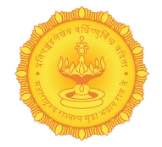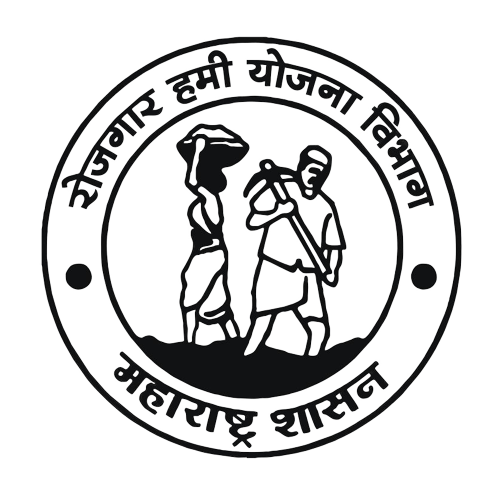Mahatma Gandhi National Rural Employment Guarantee Scheme
The basic objective of MGNREGS is to create permanent productive asset by guaranteed wage employment of at least 100 days in a financial year to every rural household whose adult members volunteer to do unskilled manual work.
The scheme focuses on employment of rural farmers/agricultural laborers by providing social security, empowering women and weaker sections, and strengthening Panchayat Raj Institutions.
Salient Features of MGNREGS
- The Central Government guarantees of at least 100 days employment in a financial year to every rural household whose adult members volunteer to do unskilled manual work. The Government of Maharashtra guarantees unskilled employment to laborers over and above 100 days.
- Every household residing in any rural area is entitled to a Job Card which contains the names and photographs of all adult members of the household so that they can demand and receive work. The Job Card is a key document that records job seekersdetails of work demanded and received wages, paid etc..
- Every adult member of a registered household whose name appears in the jobcard is entitled to demand and apply through multiple modes for unskilled manual work under the Scheme at Gram panchayat and work will be provided within fifteen days of demand or application.
- In case, the work is not allotted within due period, the wage seeker is entitled to have the unemployment allowance as per norms of MGRNEGS.
- The Gram Panchayat is responsible for identification of the projects in the Gram Panchayat area to be taken up under a Scheme as per the recommendations of the Gram Sabha. Every Adult member of rural household have a right to participate in the Gram Sabha and decide the works and the order of priority to be taken up under MGNREGS for their Panchayat.
- The worker has to be allocated to a worksite preferably within 5 km of her/ his residence. Work has to be definitely provided within the Block. If work is allocated to a worker beyond 5 km of his residence, the worker has a right to get a travel allowance.
- For all workstaken up under the Scheme, by the Gram Panchayats and other implementing agencies, the cost of material component including the wages of the skilled and semi-skilled workers shall not exceed forty percent at the District level.
- As far as practicable, works executed by the programme implementing agencies shall be performed by using manual labour and no labour displacing machines shall be used.
- There are 262 combinations of works which are permissible under Mahatma Gandhi NREGA.For the list of approved MGNREGS works please click here.
- At least60% of the works to be taken up in a district in terms of cost shall be for creation of productive assets directly linked to agriculture and allied activities through development ofland, water and trees. With the thrust on development of livelihoods,
- Works prioritised in the convergent planning process for individual beneficiaries will be given priority.
- Works creating individual assets will be prioritised on land or homestead owned by householdsbelonging to the:
- Schedule Caste
- Schedule Tribes
- Nomadic Tribes
- De-notified Tribes
- Other families below the poverty line
- Women-headed households
- Physically handicapped headed households
- Beneficiaries of land reforms
- The beneficiaries under the IAY/PMAY-Gramin
- Beneficiaries under the Scheduled Tribes and Other Traditional Forest Dwellers (Recognition of Forest Rights) Act, 2006 (2 of 2007), and after exhausting the eligible beneficiaries under the above categories, on lands of the small or marginal farmers as defined inthe Agriculture Debt Waiver and Debt Relief Scheme, 2008 subject to the condition that such households shall have a job card with atleast one member willing to work on the project undertaken on their land or homestead.
- The facilities of safe drinking water, shade for children and periods of rest, first aid box with adequate material for emergency treatment for minor injuries at the work site.
- The worker is entitled to receive the notified wage rate within 15 days and failure to receive in due time further entitled to receive the payment of compensation at the rate of 0.05% of the unpaid wages per day of delay beyond the sixteenth dayof closure of muster roll.
- Grievance readressal mechanisms which allow a worker/citizen to lodge complaint and trace the subsequent response. Multiple modes are enabled for the complainant to register a complaint and include written complaints, toll free help line and online grievance registration portal and mobile application.
Category A
Category B
Public Works Relating to Natural Resources Management
Community Assets or Individual Assets.
1. Water conservation and water harvesting structures to augment
improve groundwater like underground dykes, earthen dams, stop dams, and check dams with a special focus
on recharging groundwater including drinking water sources;
1. Improving productivity of lands of households specified in Paragraph 5 of Schedule – I through land
development and by providing suitable infrastructure for irrigation including dug wells, Farm ponds and
other water harvesting structures.
2. Watershed management works such as contour trenches, terracing, contour bunds, boulder check dams,
gabion structures, and spring shed development result in a comprehensive treatment of a watershed;
2. Improving livelihoods through horticulture, sericulture plantation, other kinds of the plantation,
and farm forestry;
3.Micro and minor irrigation works and creation, renovation maintenance of irrigation canals and drains;
3.Development of fallow/wastelands of households defined in Paragraph 5 of Schedule – I to bring it
under cultivation;
4.Renovation of traditional water bodies including desilting of irrigation tanks and other water bodies;
and conservation of old step wells/ baolis;
4. Pasture Development/fodder farm; perennial grasses like Stylo, vetiver, etc.;
5. Afforestation, tree plantation, and horticulture in common and forest lands, road margins, canal
bunds, tank foreshores, and coastal belts duly providing the right to usufruct to the households covered
in paragraph 5.
5. Bamboo, Rubber, and Coconut Plantation.
6. Pasture Development/fodder farm; perennial grasses like Stylo, etc.
6. Creating infrastructure for the promotion of livestock such as poultry shelters (brooder houses),
goat shelters, piggery shelters, cattle shelters, and fodder troughs for cattle;
7. Bamboo, Rubber, and Coconut plantation.
7. Creating infrastructure for the promotion of fisheries such as fish drying yards, storage facilities,
and promotion of fisheries in seasonal water bodies on public land;
8. Land development works in common land.
8. Bio-fertilisers (NADEP, Vermi-composting, etc);
Category C
Category D
Common Infrastructure Including For NRLM Compliant Self-help Groups
Rural Infrastructure
1. Works for promoting agricultural productivity by creating durable, the infrastructure required for
bio-fertilizers (NADEP and Vermicomposting pits) and post-harvest facilities including pucca storage
Facilities for agricultural produce;
1. Construction of Food Grain Storage Structures for implementing the provisions of The National Food
Security Act (2013)




